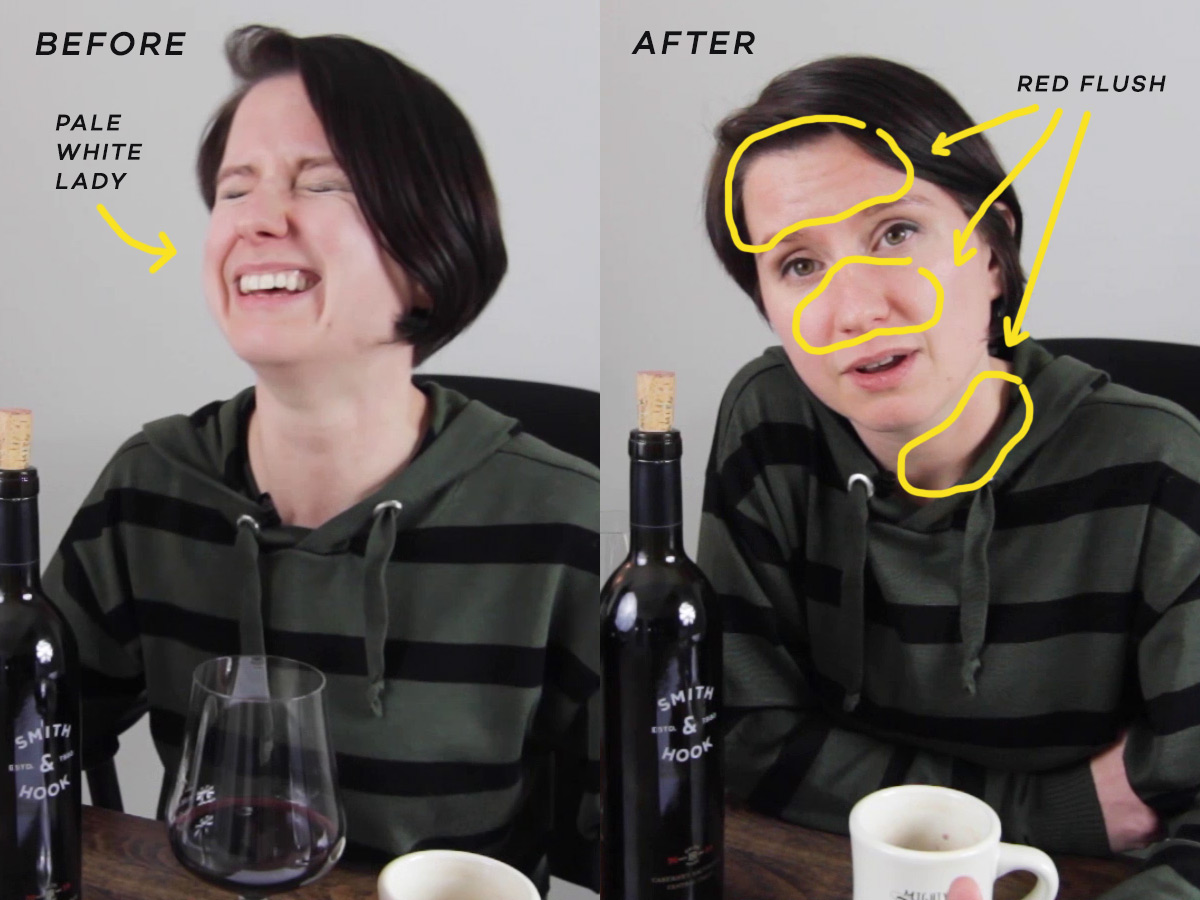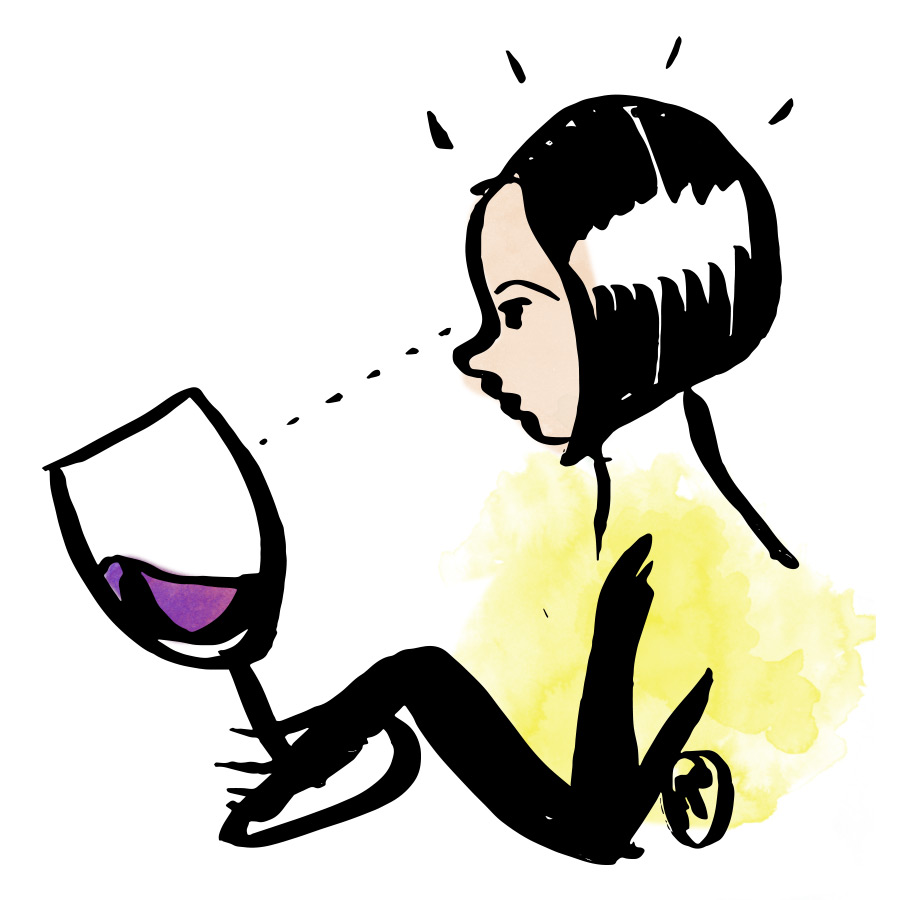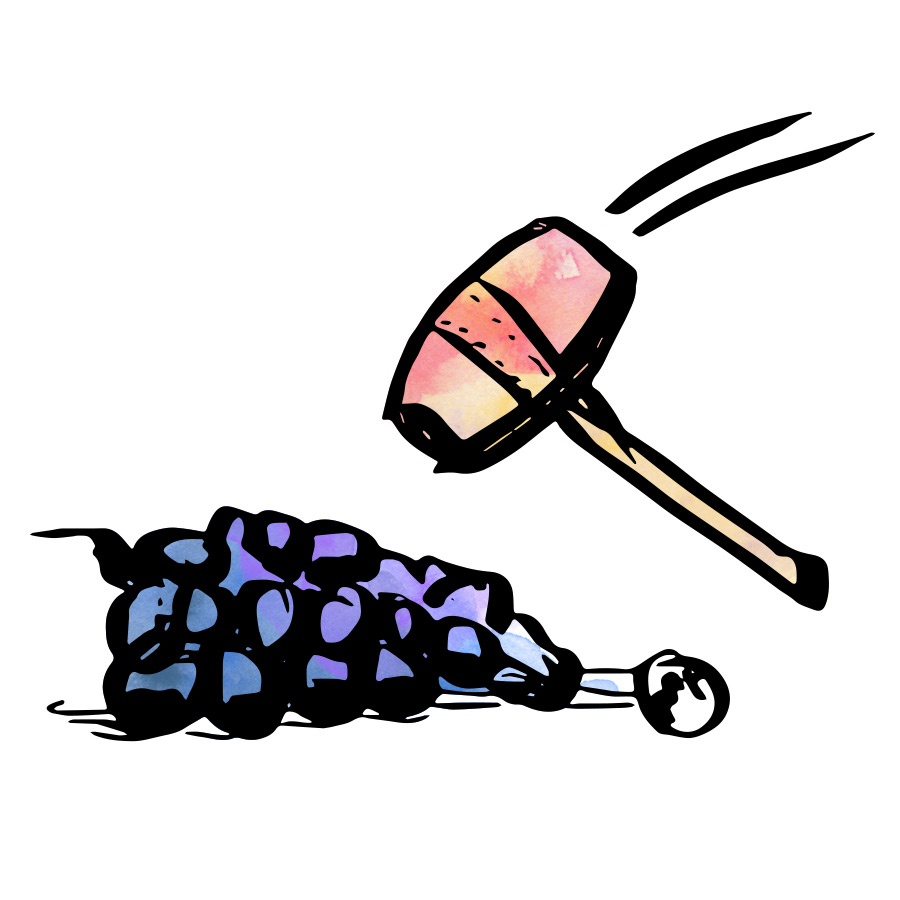Wine Somm, Madeline Puckette, analyzes grocery store Cabernet under $20. The question is, are these wines actually good, or should we be afraid?
Is There Such Thing as Good Cabernet Under $20?
It’s the ultimate question.
It doesn’t matter if you’re rich or poor, everyone wants great wine at a great price. So, I put the grocery store selection to the test and picked out three Cabernet Sauvignon wines and analyzed them. Here’s what I learned:
The Wines:
- Louis M. Martini Cabernet Sauvignon Sonoma County (2015). This wine retails for anywhere from $15–$19. Definitely a decent find if you can find it for $15. It was my favorite of the bunch, but it also gave me red flush (more on that below).
- J. Lohr “Seven Oaks Estates” Cabernet Sauvignon Paso Robles (2016). This wine retails for anywhere from $11–$17. Not hate-able, especially if you can find it for $10, but the yeast program was so prevalent in the aromas it made me think I was drinking blackberry yogurt.
- Smith & Hook Cabernet Sauvignon Central Coast (2016). This wine retails for anywhere from $17–$21. Smith & Hook was like a weaker shadow of the Louis M. Martini. Plus, it was more expensive! For the price, I’d rather drink the Gallo brand wine (i.e. the Louis M. Martini.)
A Critique on Grocery Store Cabernet Under $20:
They Looked Amazing.
One thing we sommeliers always look at is the color of wine. Color tells you a lot about a wine. It helps one determine the grape varieties used, the vintage, the region where it was grown, and even how the wine was made.
That is, if the color is honest.
When looking at these wines, I was surprised at the level of color extraction. It’s rare to see this level of intensity in value wines. So, it got me wondering. Why are they soooo dark?
Well, one rumor that floats around the industry is the use of grape-based color concentrates like “Mega Purple” and “Ultra Red.”
That being said, I can’t even figure out where to buy these additives online. Is Mega Purple a myth? I did find a few used in the home brew market (see sources). It lead me to believe that there are color additives out there, they’re just hard to find.
What About Color Additives?
No one has ever admitted to using wine grape color concentrates, so I was unable to make a conclusion in this video.
If you’re curious, the irreverent W. Blake Gray has tasted straight grape color concentrate and he said “it is almost flavorless,” but smelled like a “gymnasium floor.”
They Smelled Pretty Good.
The next thing we Somms do to assess wine is to smell it.
Louis M. Martini – This one actually smelled like Cabernet Sauvignon. It had all the right markers in the right places, even if they were a little overripe. There was baked black currant, green peppercorn, black cherry, vanilla cake, and even some herbal notes of mint. Not bad for a 15-dollar Cabernet.
J. Lohr – This one was a bit strange. It smelled more like the winery’s yeast program than a single-varietal wine. It smelled sour and milky, like blackberry yoghurt, with some subtle whiffs of fresh thyme and vanilla. That said, I can see why some wine drinkers might love these aromas – they’re fruity and creamy.
Smith & Hook – This was the only Cabernet leaning more towards the red-fruit spectrum (e.g. less ripe and more balanced). It had aromas of baked raspberry and dried raspberry bramble, along with a healthy wallop of creamy yeast. Still, the aromas were hard to distinguish and the wine was not particularly aromatic.
They Tasted Crafted.
All three wines had an explosive zing of sweet-sour acidity that tasted like Sweetarts (the candy). As a trained taster, I associate this flavor with acidification.
Let’s be fair: adding acids to wine isn’t a bad thing. In fact, one of the common acids added to wine – tartaric acid – is derived from grapes. You’d be surprised how many wineries acidify. The problem with acidification is when it’s easily identifiable in the taste. It suggests that the flavor isn’t really a realistic reflection of what wine grapes can do naturally.
Another thing I noticed about these wines was the tannin – or lack thereof. Cabernet Sauvignon is a high tannin grape variety, but these wines seemed to drop the tannin out in the mid-palate. Where’d the tannin go?!
There are a lot of wine consumers out there who don’t like high tannin wines. And, it’s understandable because tannin tastes bitter and astringent. Still, it’s a crucial component that makes wines age-worthy (and is the only thing in wine that’s good for you).

They Gave Me Red Flush.
As soon as I took a sip of the first wine in the tasting my face started to swell and turn red. (You can actually see it in the video, even with the color correction!)
The truth is, even though I taste wine frequently, I’m pretty sensitive to red wines and flush often. (Or, at least I used to.) Here’s what I’ve learned about myself:
- It’s most likely not from sulfites.
- It could be from increased levels of histamines (yeast derivatives) interacting with the other stuff (phenols, acids, etc) in red wine.
- If the flushing comes on quickly (like it did in the video), I need to drink a glass of water to avoid a headache.
- I generally flush more with bold red wines from hot climates and from cheap wines.
- After the initial flush happens and I drink water, I’m usually fine.
Obviously, these observations are not made in a controlled, scientific environment, so they’re rife with inaccuracy. Still, the flushing thing is a real problem and it happens to a lot of people (especially to those folks of Asian descent.)
Conclusion Time
After tasting these wines, I brought them home to my husband. He proceeded to drink the Louis M. Martini without a quibble.
The next night he drank the Smith & Hook but griped a bit about how I ought to buy better wine. (After all, I am a sommelier – for shame!)
He poured the J. Lohr down the drain.
So, there’s your answer.



